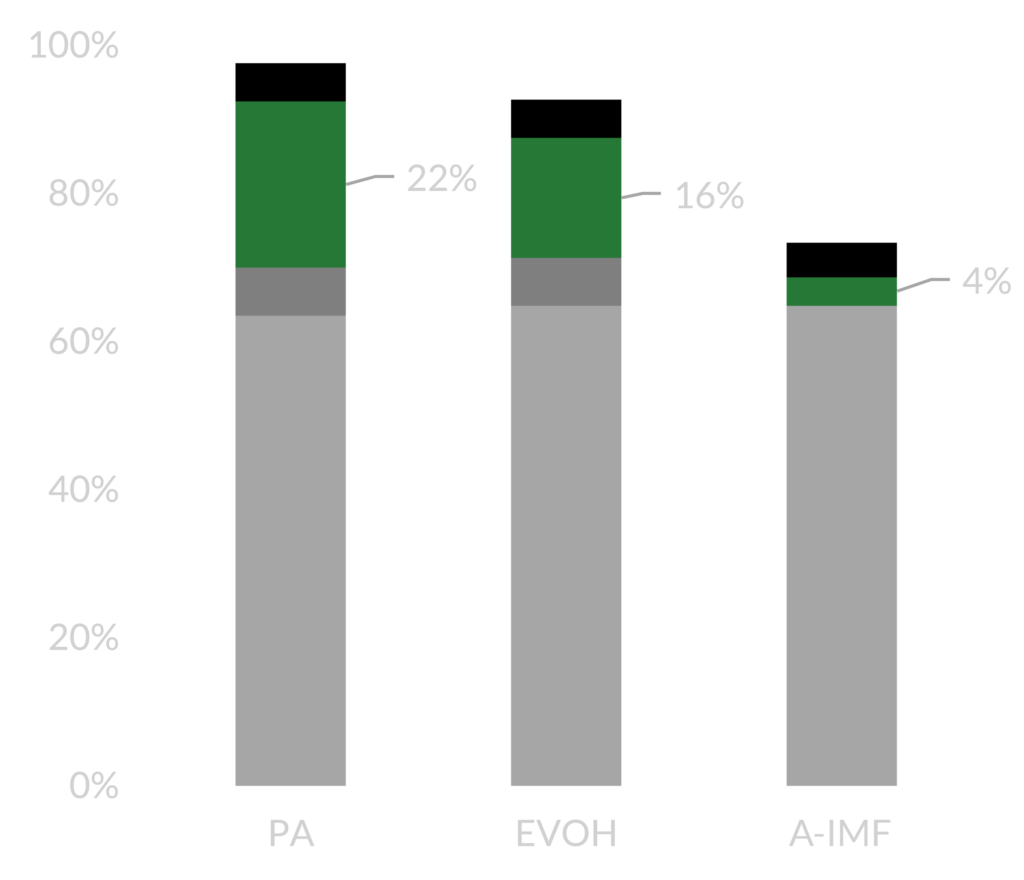Sustainable, Secure & Safe

Advanced In-Mold Fluorination Technology Enables Plastic Circularity:
Secure
- UN-certified packaging enabled by innovative designs produced with state-of-the-art manufacturing and polymer technology
- Consistent (and low) permeation - all manufacturing sites perform quantitative permeation testing prior to product release
- Long shelf life – lower solvent absorption than other barrier technologies
Sustainable
- Lowest CO2 footprint of all barrier technologies
- Mono-material HDPE - 100% Recyclable
- Endorsed by RecyClass - Fully compatible with natural and colored HDPE recycling streams
Secure
- UN certified packaging enabled by innovative designs produced with state-of-the-art manufacturing and polymer technology
- Consistent (and low) permeation - all manufacturing sites perform quantitative permeation testing prior to product release
- Long shelf life – lower solvent absorption than other barrier technologies
Safe
- Highest quality Virgin HDPE is used for internal and external layers
- Manufacturing process is fully compliant for food contact
- Rigorous leaching studies confirm PFAS levels below the limit of quantification
SUSTAINABLE
- Lowest carbon footprint for a barrier container… per Product Life Cycle Analysis
- Mono-material HDPE conventional and barrier packaging – 100% Recyclable
– Deep polymer technology understanding enables us to deliver light weight and durable containers
– Multilayer capability enables inclusion of recycled HDPE– up to 50% in UN-certified containers
- RecyClass Endorsed Technology
– Report available here.
Lowest CO2 footprint and enabling plastics circularity
Comparative LCA Cradle to gate (1L barrier packaging-FR)

- base polymer
- extra weight
- barrier material & process
- energy
- packaging
SECURE
What goes in the bottle stays in the bottle
- Low Permeation and Low Absorption maintains the product formulation, which equates with long shelf life packaging
- Security of supply: Industry leading OTIF - Highest quality manufacturing coupled with a dedication to OPEX
Low permeation | Specialty hydrocarbon mix. Permeation: 50°C
Heavier containers are not better. A light-weight A-IMF container does NOT lose material to permeation.
Low absorption | Container mass pick-up in % (xylène @50°C)
COEX containers are 6X more absorbent than an A-IMF container.
SAFE
A-IMF technology is safe for food packaging
- Each HPDE resin that is used to manufacture A-IMF containers is rigorously evaluated and validated for use
- Only Virgin HDPE is used in internal and external layers
- The manufacturing process uses a very low concentration of a high purity gas mixture, comprised of only dilute fluorine in nitrogen, and is fully compliant with US FDA for food contact packaging
- PFAS Safety: IPACKCHEM has performed numerous studies and continues to utilize the best available analytical methods to ensure we are fully compliant with regulatory requirements.
- Ipackchem’s recent study tested post-mold, plasma fluorinated and A-IMF containers, and A-IMF was the only fluorinated barrier technology with PFAS levels below the limit of quantification.